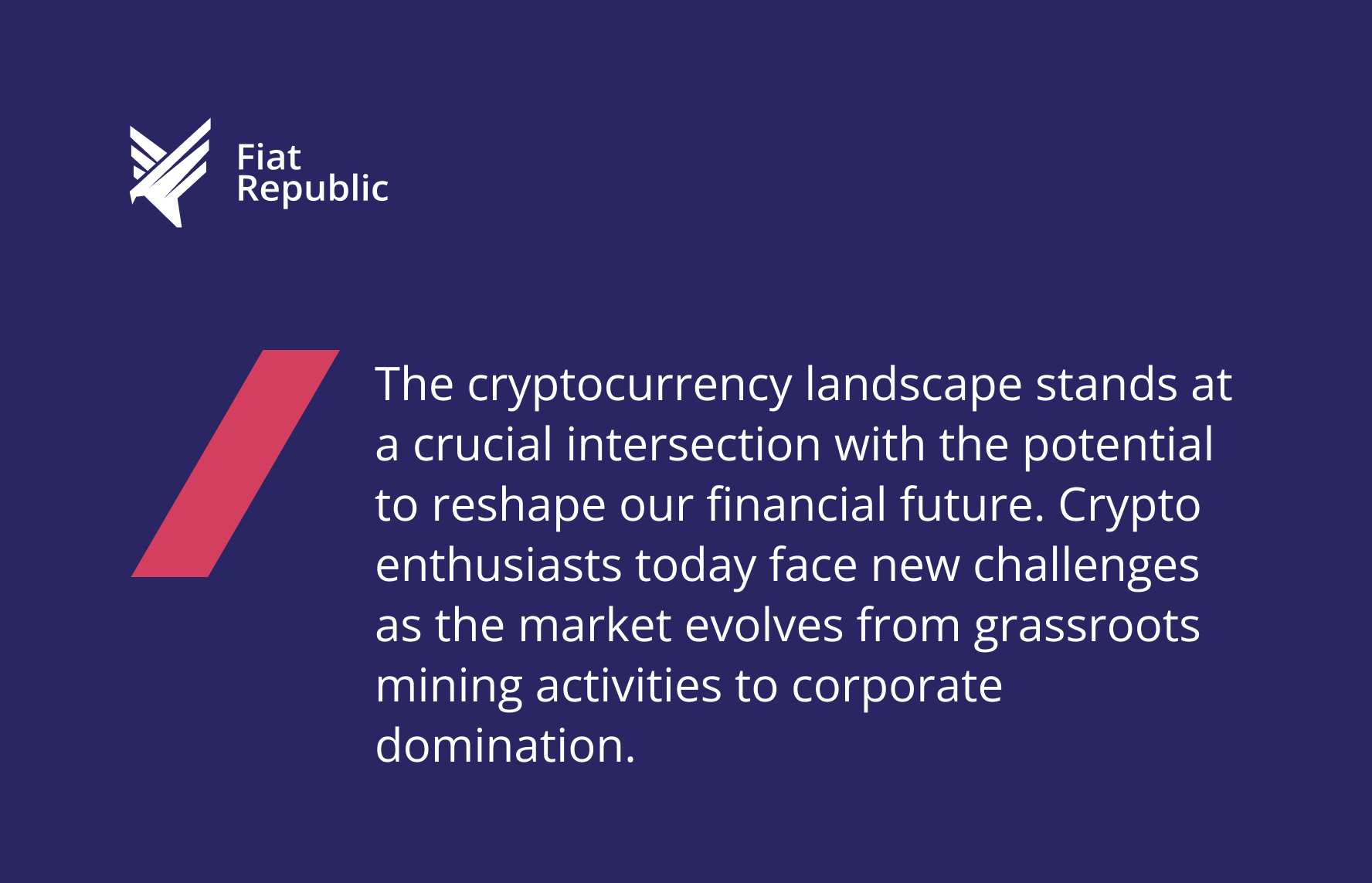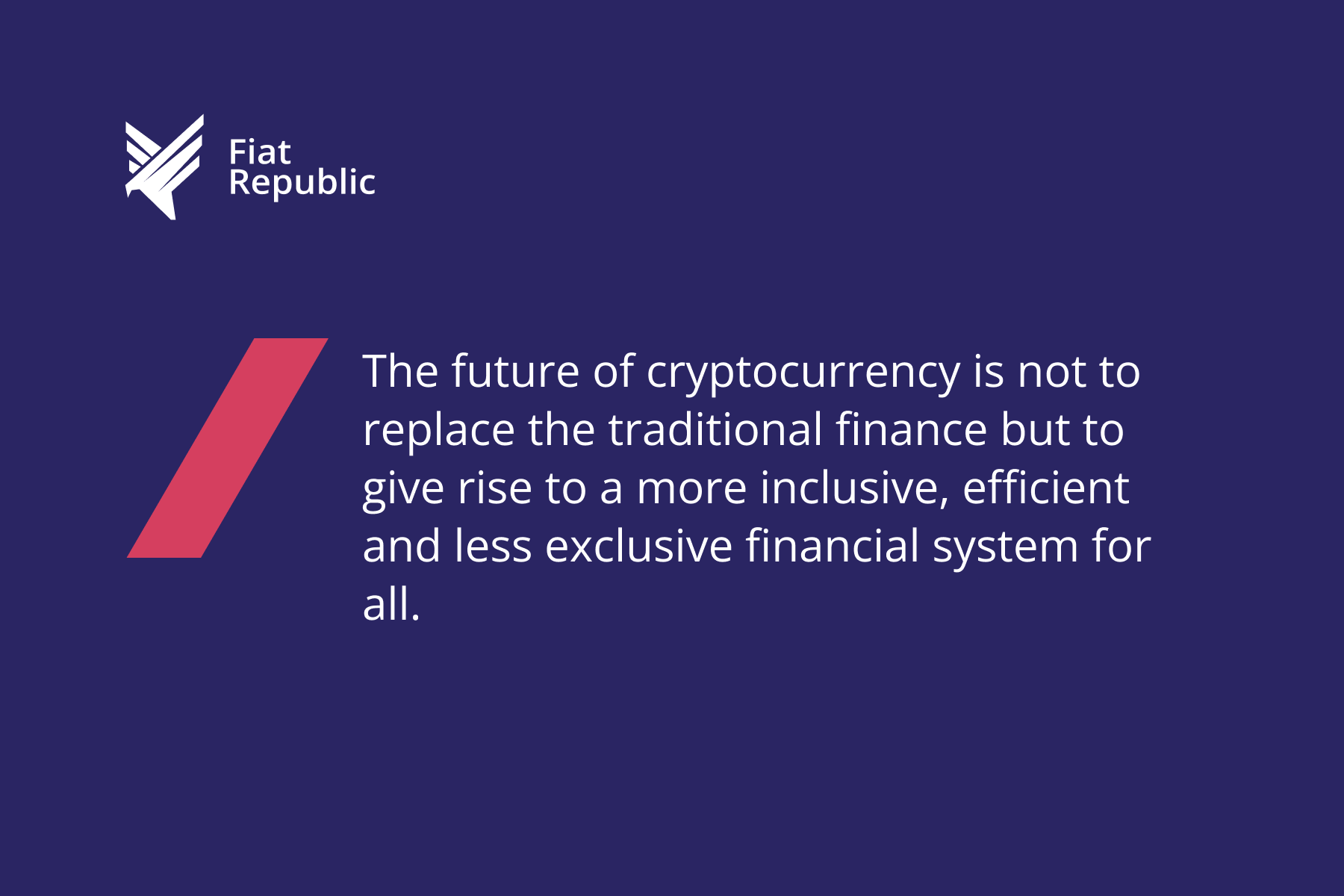The future of crypto in the next 5 years: Bringing crypto to the mainstream
The cryptocurrency landscape stands at a crucial intersection with the potential to reshape our financial future. Crypto enthusiasts today face new challenges as the market evolves from grassroots mining activities to corporate domination. But what does it take for crypto to transition from a speculative asset to a mainstream financial tool? Let’s explore the path forward and the challenges that lie ahead.
The Rise of Digital Currencies
The rise of digital currencies has been nothing short of remarkable in recent years. With the growth of cryptocurrency, digital currencies have become a household name, and their adoption is increasing at an unprecedented rate. According to a recent survey, the number of cryptocurrency owners is estimated to be around 200-300 million people worldwide. Vietnam, in particular, stands out as the most mature market for crypto adoption, with a significant percentage of its population owning digital currencies.
The value of the cryptocurrency market is predicted to triple by 2030, reaching almost $5 billion. This growth is expected to be driven primarily by remittances and global payments, highlighting digital currencies’ practical utility in facilitating faster and cheaper cross-border transactions. As the market matures, weaker crypto operators are likely to be shaken out, leaving behind a more robust and trustworthy industry. Regulatory tightening, while often viewed with mixed feelings, can actually increase industry trust and make investors feel more secure, paving the way for broader adoption.
Mainstreaming crypto: Defining a true success case for the future of cryptocurrencies
In a recent Crypto Legends episode, industry leaders offered diverse perspectives on what mainstream adoption truly means. The panel included Mounir Laggoune, CEO of Finary; Nicolas Louvet, CEO of Coinhouse; Bertrand Godin, COO at Fipto; and Wolf-Alexis Puttfarken, Commercial Director France & Benelux at Bitpanda Technology Solutions. Their insights reveal that the journey toward mainstream adoption isn’t just about the paradoxical rise and uncertain future of cryptocurrency—it’s about real-world utility and accessibility.
Will digital currencies be the future of money?
Nicolas Louvet highlights that cryptocurrency adoption varies significantly by region, with France seeing 8-11% ownership rates, while Latin America and Southeast Asia boast adoption rates reaching 20%. These numbers suggest we’re still in the early stages of what could be a global financial transformation.
The impact of varying global regulatory attitudes on crypto transactions is significant, with some countries viewing it as illegal while others embrace it. This affects the future of cryptocurrency, market adoption, and the potential for greater acceptance and integration of crypto transactions into everyday commerce.
Wolf-Alexis Puttfarken provides a concrete benchmark for mainstream adoption: 200-300 million people using blockchain technology daily. Meanwhile, Bertrand Godin adds a crucial corporate perspective, comparing crypto adoption to traditional currencies in corporate accounts and payments—highlighting a significant gap that needs bridging.
Expert takes: Is cryptocurrency the future or just a passing trend?
Mounir Laggoune offers a compelling perspective on mainstream adoption: “When crypto powers something, and I have no idea it’s there, maybe that’s when it becomes mainstream.” This insight suggests that true success will come when cryptocurrency becomes an invisible infrastructure rather than a novelty.
Major brands, from Coca-Cola to Adidas to Chanel, have already begun exploring cryptocurrency applications through NFTs and metaverse projects. NFTs are becoming a prominent type of digital asset that can enhance brand engagement and customer loyalty. However, the market volatility following the 2020-21 bull run has tempered some of this enthusiasm, demonstrating the need
Will crypto keep rising by 2030?
Predictions for crypto’s growth trajectory through 2030 largely depend on several key factors:
– Global regulatory developments
– Scalability and security technological advancements
– Integration with traditional financial systems
– Corporate adoption rates
– Environmental issues and solutions
– The impact of Bitcoin mining and Bitcoin halving on market prices and the overall supply of Bitcoin
Bridging the gap: Technology and accessibility in the future of cryptocurrencies
To achieve mainstream adoption, we need to bridge Web 2.0 and Web 3.0. This is what Bitpanda’s technology represents: banks and fintechs can integrate crypto seamlessly. In the evolving crypto space, multiple licenses and strong regulatory footing are essential for building trust among brands. Bitpanda’s solutions provide a solid backbone for traditional financial institutions dipping their toes into cryptocurrency.
Cross-border payments: How cryptocurrencies are the future of remittances
Bertrand Godin presents a compelling case for crypto in international transfers: “I can get a delivery from Amazon probably tomorrow, but when I send some Reals to Brazil, it’s probably going to take a few days and cost me a lot.” This stark contrast highlights cryptocurrency’s potential to revolutionize cross-border payments.
Read more about:
DeFi and the future of finance: Is crypto the future for the unbanked?
While cryptocurrency can potentially solve real-world banking challenges, the user experience usually lags. Companies need to convince everyday users that decentralized ecosystems offer real value to gain mainstream adoption. The key aspect will be to become fully symbiotic with traditional finance, especially with innovations like virtual IBANs.
NFTs and digital ownership: The future of crypto in the entertainment industry
NFTs are a new frontier in digital ownership and content monetization. Despite market fluctuations, the technology keeps evolving, opening new possibilities for artists, creators, and entertainment companies.
Regulatory challenges: What is the future of cryptocurrency under global crypto regulation?
Regulation emerged as a crucial factor in the panel discussion. Mounir Laggoune warned against over-regulation stifling innovation, drawing parallels with AI regulation: “Typically, when I see things like the European government wants to ban AI… I think there was the same discussion in crypto where people wanted to ban blockchain. So it’s creating so much noise that… [is] sending the wrong message.”
Nicolas stressed the importance of balanced crypto regulation, noting it provides “clarity and […] a platform upon which companies or institutional investors that are investing, companies like yours, like mine, can rely on for predictability, for mitigating their risks.”
U.S. regulations
The regulatory landscape in the United States continues to evolve, with agencies like the Securities and Exchange Commission (SEC) and CFTC working to establish clearer frameworks for cryptocurrency oversight. These regulations will be crucial in determining crypto’s mainstream adoption path.
Will crypto keep going up or be held back by its carbon footprint and the uncertain future of crypto?
The adoption of cryptocurrency still faces a major challenge in environmental concerns. The industry is actively working on solutions, including:
– Proof of Stake mechanisms transition
– Renewable energy sources investment
– More energy-efficient blockchain protocols
– Carbon offset initiatives
Conclusion: The future of crypto — is cryptocurrency still the future?
The multiplicity of crypto adoption’s path to mainstream is a collaboration of innovators, regulators, and users. As the industry evolves, success will depend on:
– Moving beyond speculation with real-world utility
– Making user interfaces user-friendly
– Balancing regulatory requirements with innovation
– Building trust with mainstream users
– Integrating with traditional finance seamlessly
The future of cryptocurrency is not to replace traditional finance but to give rise to a more inclusive, efficient, and less exclusive financial system for all. It seems that in the world we live in, as technology continues to evolve and adoption builds, we could end up being one of the many who confuse their lives without crypto with the unknown.
Read more about
Frequently Asked Questions
Is there any future for cryptocurrency?
Cryptocurrency has great potential to disrupt and innovate the financial sector in the future. Although the technology is still in its infancy, cryptocurrencies have proven their ability to address real-world problems such as cross-border payments, digital ownership, and financial inclusion. As the industry matures, there is growing speculation about whether everyday transactions will be conducted using virtual coins. Although investors should be aware of the market’s volatility and associated risks, the market was not pricing in a potential recession.
What are the future predictions for cryptocurrency?
Experts’ predictions for cryptocurrency vary widely, with some forecasting significant growth while others maintain a more cautious outlook. Key factors influencing these predictions include regulatory developments, institutional adoption, technological advances, and market maturity. Crypto investors are increasingly comfortable using cryptocurrency for everyday transactions, such as online shopping. Additionally, there is a notable demographic shift, with older consumers now representing a significant portion of those interested in investing in cryptocurrency, drawn by the appeal of financial freedom compared to traditional banking. While specific price predictions should be treated with skepticism, many experts believe the underlying technology will continue to evolve and find new applications.
What will crypto be like in 2030?
The technology behind cryptocurrency is expected to be more integrated into mainstream financial systems by 2030 with clearer regulatory frameworks and improved technological infrastructure. A lot of experts think it will be adopted more widely in the institutional space and with more practical applications, not just for trading but also for price appreciation. However, the adoption of digital currency faces challenges and potential delays, particularly due to regulatory interactions that could significantly impact its development. The exact picture will depend on a host of factors, such as regulatory decisions, technological advances, and market adoption rates.
Is it worth getting into crypto in 2024?
The potential for high returns when it comes to cryptocurrency remains in 2024. Exploring the paradoxical rise of cryptocurrency, we see rapid growth over the last 18 months despite an uncertain future. But it is important to note that crypto investments are high risk — high volatility and regulatory uncertainties. Before investing, people should do a lot of research, they should not invest what they can’t afford to lose and have a long term investment goal.
Why is crypto crashing?
Cryptocurrency markets can experience significant downturns for various reasons, including:
-Regulatory announcements and regulatory actions, which often lead to mixed feelings about regulation’s impact on the cryptocurrency landscape
– Macroeconomic factors
– Market sentiment shifts
– Technical selling pressure
– Industry-specific events
– Large-scale profit-taking
Anybody in the cryptocurrency market should know about these factors as they can help predict and navigate market volatility.
Want to make fiat access work for you?







